May 5, 2023
Dear Fruition Family,
It is with humbled, heavy hearts that we reach out to share hard news with you today.
Emergent Viruses Around Us
Plants are susceptible to viruses just like humans and we’ve just learned that an emerging disease, Tomato Brown Rugose Virus (ToBRFV), has infected the Brandywise tomato seeds we recently shared with you. The affected lot is #Ns10-ll-br; at this time, we do not have any concerns about previous lots of Brandywise. Lot numbers can be found on the back of your packet & if you no longer have your packet but you purchased Brandywise between December 20, 2022 and May 4, 2023, you received this lot. This virus can affect tomato and peppers; current research shows ToBRFV does not affect eggplant, tomatillos, potatoes, and other common solanaceae species. To learn more about ToBRFV, the American Seed Trade Association shares this resource and here are three additional sources we trust, shared with us by our colleagues at Cornell:
- https://www.canr.msu.edu/news/tobrfv-a-new-concern-for-tomato-and-pepper-producers
- https://onlinelibrary.wiley.com/doi/10.1111/epp.12711
- https://www.vegetables.cornell.edu/pest-management/disease-factsheets/tomato-brown-rugose-fruit-virus/
- https://www.betterseed.org/wp-content/uploads/ToBRFV-QA.pdf
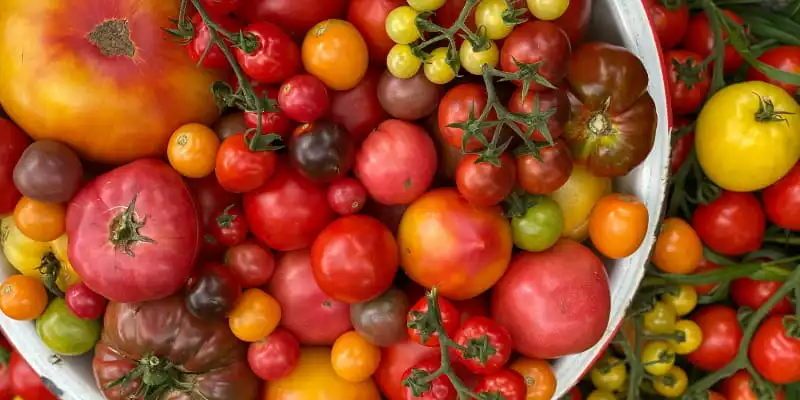
Now What?
We are so sorry for the immense disappointment as well as immediate implications. Since the virus is most readily transmitted by tomato or pepper plants coming into contact with other nearby tomato or pepper plants, we encourage you to:
~ Throw away (do not compost) any Brandywise seedlings you have grown, as well as all other tomato and pepper seedlings that may be sharing the same tray. (Update as of 5.17.23: Also consider throwing away any tomato and pepper seedlings that may have become infected through handling. Use your best judgment, realizing that this virus can have long term consequences for future tomato growing.)
~ Throw away all potting mix and the tray itself, since close planting can create the conditions for transmission. (Update as of 5.17.23: If you’d prefer to not throw away your trays, clean them thoroughly and sanitize them with a 10 percent bleach solution, a dilution of household bleach of 9-parts-water to 1-part household bleach.)
~ Wash your hands before touching anything else.
~ If you’ve already planted your Brandywise seedlings, be sure to remove and dispose of all Brandywise plant tissue from the field, including the full root mass, and disinfect your shovel afterward.
As we grow alongside this emergent virus, we’re sharing with you our current understanding of Brown Rugose and anticipate our understanding to develop with time. As always, as we learn more, we’ll share more.
And did you know? Your local agricultural extension office is here to respond to any of your garden questions and they’re connected to the frontlines of Brown Rugose research, so know you not alone, wherever you are.
If you’re concerned about a tomato or pepper plant expressing potential virus symptoms, send photos and tissue samples to http://plantclinic.cornell.edu/
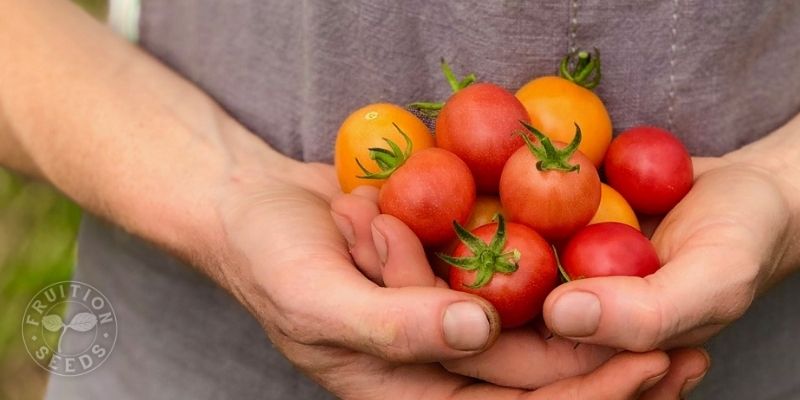
Good News & Hard News
Like many in the small-scale seed world, our seed production work is very hands-on, both on the Fruition farm in Naples and in collaboration with a small community of very skilled seed growers. While this artisan level of attention to detail promotes high quality seed, there are always new challenges (hello, emerging diseases) prompting us to deepen our knowledge and lean into community. There’s good news and hard:
The good news: The only seeds we share that are affected are Brandywise, so please sow and grow all our other seeds with confidence. The infected seed lot of Brandywise hybrid was not produced at the Fruition farm.
The hard news: Brandywise tomato is an F1 Hybrid, which requires specific and controlled crossing between 2 parent lines. Our organic Brandywise hybrid seed was produced in a greenhouse environment, which can increase virus transmission vectors. Going forward, we will explore if or when we can again share disease-free organic Brandywise tomato seed.
Always: We’re all doing everything we can to learn more, to prevent disease transmission in the future and to be proactive with our beloved community. All flourishing is mutual.
Also, consider: We’re grateful we learned about Brandywise’s positive Brown Rugose test just before planting season — narrowly averting the devastation that may have ensued, had we not known: can you imagine all the affected seedlings that may have been planted, that now are not? If we are considering the cost to our future selves and future generations, let us give thanks as we grieve together.
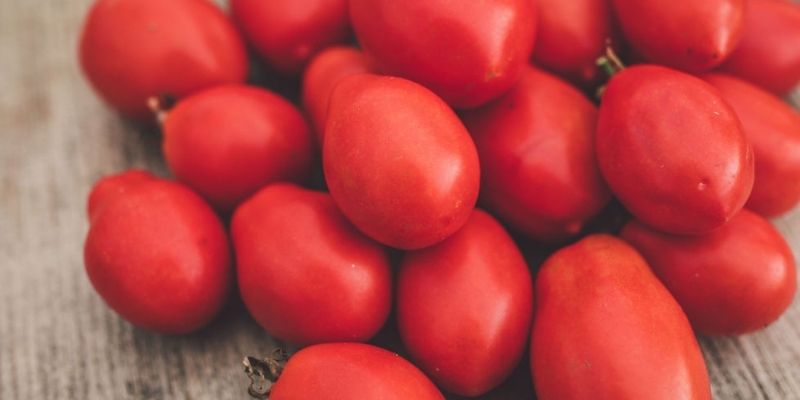
May 12, 2023
Brandywise Recall Resilience Map
Friends, this map was discontinued as of July 13, 2023.
Let’s connect and redistribute collective tomato and pepper seedling abundance in the aftermath of the Brandywise seed recall…
~ If you have tomato or pepper plants to share, even just one extra seedling, a profound thanks.
~ If you are using the map because you’ve sown affected seeds and have taken heart-breaking measures to try to prevent the spread of this emerging virus, such deep gratitude to you.
May 23, 2023
Dear Fruition Family so deeply affected by our Brandywise recall,
It’s been a heart-wrenching May: Even as countless leaves unfurl and frog song so beautifully surrounds us, the pain of throwing away so many seedlings as a result of this recall has been excruciating. Molly Costello reminds us: grief and love are sisters. This pain we bear together is borne of a love deeper than pain. We share both this pain and this love with you, Friends.
Together, the courage of our individual and collective acts makes possible so many more tomatoes being grown without Brown Rugose by our sides for seasons and generations to come. Perhaps this is how grief grows love again?
We’ve learned so much in the last three weeks and are so humbled by the constant (un)learnings of life, especially in the face of an emergent virus. Thank you to everyone who was able to join our webinar live and here’s the recording of our
Garden Q & Q: Tomato Brown Rugose Virus & How We Move Forward Together
as well as answers to questions that you asked and we didn’t have time to get to during the Q & Q.
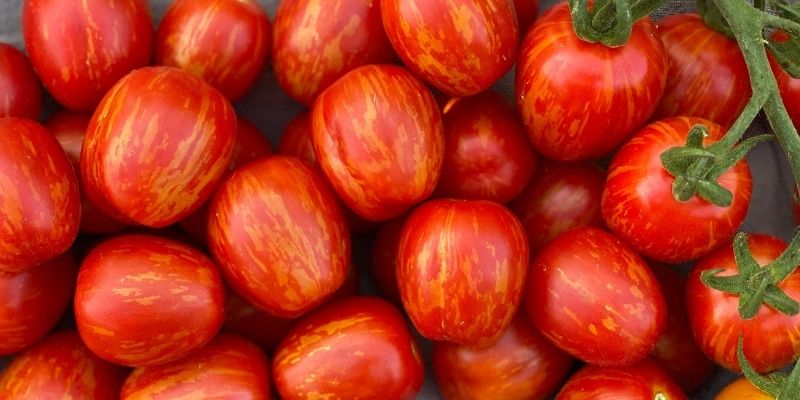
Reciprocity
We sent emails on May 5th directly to everyone who has purchased our affected lot of Brandywise, sharing reciprocity as well as more resources to accompany us all. As always, we are doing our best to meet this challenging moment with courage, curiosity and generosity.
We don’t pretend that any amount of dollars covers anyone’s costs in the face of an emergent virus no one could have predicted or planned for, and we know that for many of you what we’ve been able to offer has felt inadequate given the circumstances and how much you’ve recently lost. We are deeply sorry for your time, energy, dollars and dreams lost to this virus. We also appreciate and fully agree: your loss of plants, labor and love is irreplaceable. Our individual and collective losses are truly immense.
Navigating what we are able to offer folx affected by this situation has been a profound challenge. As we grapple with the ripples in our own small-farm budget of what this loss means, the humble truth is that we have offered what we can in this moment, in order to continue sharing all that we can across future seasons.
We don’t claim to justify that any refund / credit can rebuild trust without future actions demonstrating deep commitment to sharing the highest quality seed possible.
Thank you for trusting us to learn, unlearn & always grow beside you; please share any concerns with us anytime at support@fruitionseeds.com.
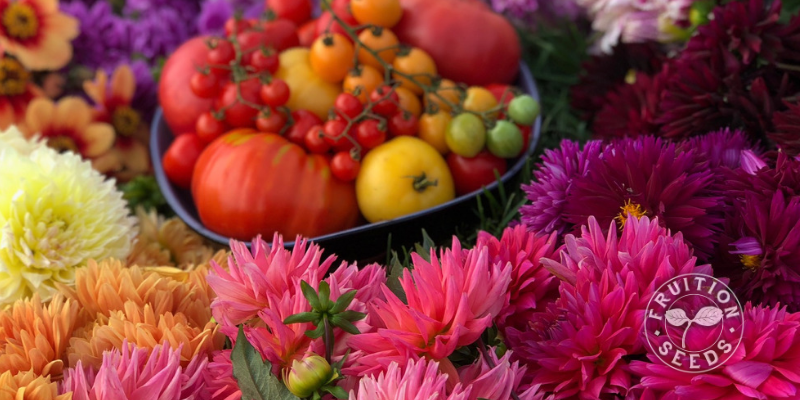
Finding A Wider Lens
We are here to share developing knowledge as well as deep care as we accompany you and us all in the aftermath of the most devastating disease Fruition has ever experienced. Together, let’s take a step back.
Though this is Fruition’s first experience of a seed recall, this Brandywise seed is far from the first disease-related seed recall and is also not the first Tomato Brown Rugose Virus recall. Though we hope it will be the last for Fruition, it won’t be the last for our larger world. This is much larger than this one incident, much larger than Fruition. Friends, for all the positivity and possibility around local food systems and regionally adapted seed in our time, here are three humble truths:
1) We are deeply intertwined with the realities of food systems where intensive monocropping and short-term extraction mentalities tend to both breed diseases and perhaps encourage avoiding responsibility for their spread.
2) We exist in a system where bigger farms and companies tend to have more economic resilience. Additionally, our system creates incentives for businesses to not test or communicate openly about diseases being present to prevent losing money, trust, or reputation.
3) These realities are further compounded when a sense of community, of personal relationship, of personal accountability doesn’t exist between the growers of seeds, the distributors of seeds and the sowers of seeds. Amid the heartache of being humxn in a system not centering humxnanity, this situation has made us feel (more acutely than usual) the complexities of sharing seeds through a for-sale model. (Particularly – in a world where our farm, our employees, and our customers all simultaneously are squeezed with bills to pay that will not be adjusted based on this loss.) We are so grateful for the ways that, despite these realities, so many of you have met us with practicing a sense of community, and with honest, personal conversations about how this has affected you and how we are relating . Indeed, our interconnection and interdependence seeds resilience in our joy as well as our heartache.
Like climate change, emerging diseases are part of our lives. The devastating impact on many gardeners and farmers in our community who have received Brandywise is both personal for us and profoundly calling us into stronger community: deep, systemic problems we need to be addressing both individually and collectively.
For us, the Brandywise Recall Resilience Map is a community-based form of ‘insurance’ for when insurance and accountability in our current system is out of reach and we look forward to iterating on this profound tool for mutual aid and community building in the future.
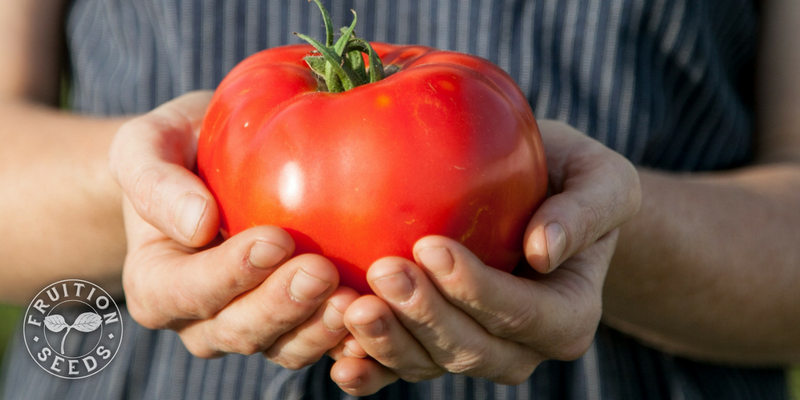
Moving Forward
In the spirit of the resilient, adaptive growth of the seeds we all love so much, we’d love to share three foundational sentiments for us here at Fruition moving forward:
~ Our network of seed growers is small and extraordinary. We (re)commit to cultivating strong support, sharing knowledge, communicating standards as well as best practices with our seed growers. As we learn better, we do better.
~ We’re grateful for our many colleagues at Cornell and other institutions, researching and sharing information about Brown Rugose and other existing as well as emerging diseases. We (re)commit to nurturing these relationships, doing everything we can to help their work grow capacity and abundance in the world.
~ We grow and share seeds because we believe in community, growth and accountability in love. We take our responsibility very seriously to grow and share the highest quality seed we are able. We (re)commit to doing everything we can to learn more, to prevent disease transmission in the future and to be transparent, generous and proactive with you, our beloved community. We will not be perfect; we nonetheless commit to moving forward, one step and one breath at a time. All flourishing is mutual.
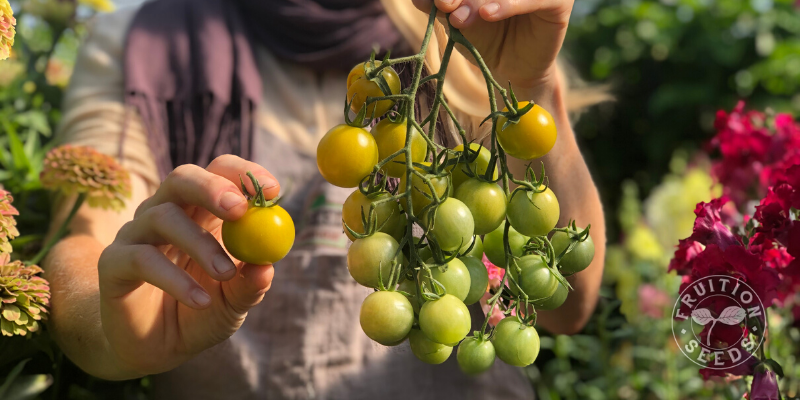
How we move forward together makes all the difference. Thank you for sowing seeds and knowing seeds, like each of us, are not as small as they seem. Thank you for reading, for researching, for your courageous action and for feeling our deep apology as well as abiding commitment to seed and community. Thank you for trusting seeds to grow us more than we grow them. Thank you for leaning in, learning with us, grieving with us and growing with us.
We are here for you in the glory of gardens and in the heartache, Friends.
As always, if you have questions please reach out to us at support@fruitionseeds.com
With deep apology and abiding commitment to seed and community,

with the care of the Fruition Crew
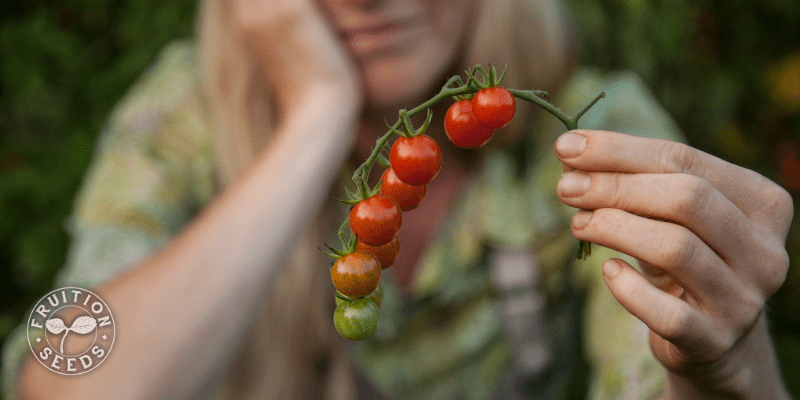

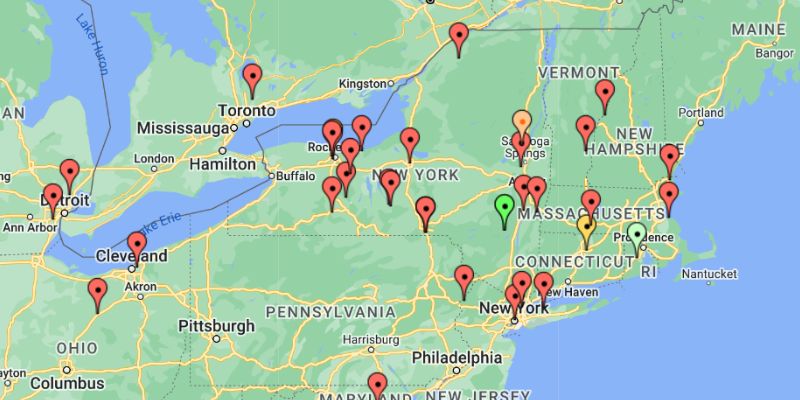
I bought brandywise seeds from you last year…were they also infected?
Also, I just read this extensivel article at https://onlinelibrary.wiley.com/doi/full/10.1111/aab.12788
And two very helpful highlights are about complete seed disinfection:
(I appears to be possible to save the seeds by soaking them in a 2.5% clorox solution for 15 minutes).
Regarding the use of disinfectants against ToBRFV, Chanda, Shamimuzzaman, Gilliard, and Ling (2021) conducted different bioassay experiments through mechanical inoculation using a ToBRFV inoculum treated with specific concentration of several chemicals at designated exposure time periods, demonstrating the 90–100% efficacy of 0.5% Lactoferrin, 2% Virocid and 10% Clorox, and 3% Virkon against ToBRFV.
While, in the case of infected seed lots, seed disinfection treatments can be applied. For this purpose, different seed disinfection treatments can be used without compromising the germination percentage; appropriate heat or chemical seed treatments by immersion in a 2.5% sodium hypochlorite solution for 15 min have been found to ensure 100% germination and complete seed disinfection (Davino et al., 2020), while Samarah, Sulaiman, Salem, and Turina (2021) obtained a 100% of disinfection rate ToBRFV-contaminated seeds with 2% hydrochloric acid (HCl) for 30 min or 10% trisodium phosphate (TSP) for 3 hr, alone or in combination.
Thanks for sharing, Tom & we’ll certainly read through.
At the farm in Naples we hot water treat tomato and pepper seeds. And we scout for any seed borne diseases. To date we have not seen any seed borne diseases on the farm and we heat treat out of caution. Please note, current practice shares that heat treating does not kill viruses. It can effectively kill bacteria or fungi that are on the outside & inside of the seed coat. Unfortunately the infected Brandywise lot was grown on another farm where this emergent disease was asymptomatic on their plants. A side note, tomato seed is often extracted via fermentation which destroys a lot of the fungi, bacteria & virus on the outside of a seed. Another side note, we heat treat right after we decant the seeds while they’re still wet and then we dry them. We have tested over the years and have not found that it does not negatively impact our germ, short-term or long-term, compared to not heat treating at that stage.
Being in community in celebration as well as challenge is foundational for Fruition. As such we’re sharing a free webinar, “Tomato Brown Rugose Virus & How We Move Forward Together” on Wednesday, May 17th between 6:30 & 7:30 pm eastern. We’ll be joined by our colleague from Cornell Cooperative Extension who can share some of the most up to date research and answer questions. Join us free on zoom (register here: https://www.fruitionseeds.com/sowing-growing-series/) and bring all your questions so we can dive in together. All are welcome, the session will be recorded and available afterward on our website posted alongside other webinars.
With abiding commitment to seed and community,
Sylvia and the whole Fruition Crew
Hello, thank you for your honesty. While I am saddened by the news, your willingness to share this important information is refreshing. My brandywise seedlings share an indoor greenhouse with other tomatoes and peppers. They are not in the same trays but in close quarters. Should I dispose of all the seedlings in the greenhouse? Thank you.
Hi Kate,
Thank you for your kind words and questions. Our recommendations right now and from being in conversation with researchers studying the disease at Cornell is to dispose of tomato and pepper seedlings sharing a tray (at any time from germination through seedling stage) with the infected Brandywise plants and also consider throwing away any tomato and pepper seedlings that may have become infected through handling. Use your best judgment, realizing that this virus can have long term consequences for future tomato growing
With abiding commitment to seed and community,
Sylvia and the whole Fruition Crew
Petra, I am so bummed. I know you called today about the Brandywise issue. Not only did I just plant them in my garden I gave plants to my daughter her mother-in-law and my next door neighbor. Now I learn I have to pull all of my tomato plants and tell all above the same. It is a REAL bummer. How does the disease express itself? Is there any chance that my seeds were not infected? This is too much to handle. What a bummer a whole season ruined. I know it couldn’t be helped. Im just bummed.
Hi Timothy,
My heart is aching thinking of each of the seedlings you are losing. As a gardener/farmer myself, the amount of time, care, dollars, and resources it takes to go from seeds to healthy seedlings, as well as the loss of the future harvest is very real to me (and resonant as we’ve discarded many plants at Fruition as well). I am grateful for your action alongside us to prevent further losses from this devastating disease.
If you are looking out for symptoms of Tomato Brown Rugose Virus, you can look for: general growth symptoms (stunted); leaf symptoms (particularly on upper leaves – yellowing, bubbling, mosaic and mottling, fern leaf and leaf narrowing); flower symptoms (abortion); fruit symptoms (rough surface; blotchy, pale, or yellow-brown spots; undersized or deformed fruit); and calyx symptoms (brown veins, necrotic tips). Symptoms tend to be more severe during times of stress. (Photographs are posted on this MSU webpage here: https://www.canr.msu.edu/news/tobrfv-a-new-concern-for-tomato-and-pepper-producers and in the brochure prepared by the American Seed Trade Association here: https://www.betterseed.org/wp-content/uploads/ToBRFV-QA.pdf)
& thanks for asking us to help assess if there’s a chance your seeds were not infected. There’s always a chance they’re not infected, but here’s what we do know:
The reality is that this is an emerging disease and our collective understanding of it is still developing. We tested 100 seeds from the infected lot. In engaging researchers at Cornell who study this disease and how it’s transmitted, we have reason to believe that testing positive with such a small sample is serious and warrants a full lot recall. Since the Brandywise seed lot tested positive for the virus, Fruition has chosen to make recommendations based on current research that suggests that this virus may be able to remain stable in the soil for up to 20 years. We believe our recommendations match the seriousness of a possible 20-year infection. By the time it is obvious if particular plants have been affected it may be very difficult to fully remove all plant debris from your garden and prevent infection if it hasn’t occurred already. Furthermore, current research also indicates that plants can carry the virus without showing symptoms, meaning your plants may look okay all the while infecting other plants and your soil.
Our current recommendations are outlined in this blog post.
We’ll be sharing so much more at our upcoming webinar “Tomato Brown Rugose Virus and Moving Forward Together” on Wednesday May 17th from 6:30 to 7:30 et. We hope you can join us. You can sign up for the webinar here: https://www.fruitionseeds.com/sowing-growing-series/
We’ll also be sharing a recording of the webinar here for those who can’t make it live: https://www.fruitionseeds.com/learn/webinars/
With abiding commitment to seed and community,
Sylvia and the whole Fruition Crew
Petra did you see my picture of the deformed Long paste tomato. Is that how the virus manifests?
Hi Tim,
Thanks for reaching out. I haven’t seen your pictures, but this may help:
If you are looking out for symptoms of Tomato Brown Rugose Virus, you can look for: general growth symptoms (stunted); leaf symptoms (particularly on upper leaves – yellowing, bubbling, mosaic and mottling, fern leaf and leaf narrowing); flower symptoms (abortion); fruit symptoms (rough surface; blotchy, pale, or yellow-brown spots; undersized or deformed fruit); and calyx symptoms (brown veins, necrotic tips). Symptoms tend to be more severe during times of stress. (Photographs are posted on this MSU webpage here: https://www.canr.msu.edu/news/tobrfv-a-new-concern-for-tomato-and-pepper-producers and in the brochure prepared by the American Seed Trade Association here: https://www.betterseed.org/wp-content/uploads/ToBRFV-QA.pdf)
It’s also true that what you’re seeing on your Finger Lakes Long Tomatoes could be (and very likely is) something completely different from this Brown Rugose virus, which is so much more rare than other tomato diseases. Here’s a great place to start to help ID what you’re seeing: https://www.fruitionseeds.com/learn/blog/identifying-managing-tomato-disease-organically/ reaching out to your local ag extension as another resource is also a great bet.
Finally, Finger Lakes Long Tomatoes were grown on our farm where we 100% do not have an infection of the Brown Rugose Virus.
With abiding commitment to seed and community,
Sylvia and the whole Fruition Crew
In What country were the infected brandywise seeds produced
Hi Karen,
Thank you for reaching out. The seed was produced in the US. We’ll be sharing so much more at our upcoming webinar “Tomato Brown Rugose Virus and Moving Forward Together” on Wednesday May 17th from 6:30 to 7:30 et. You can sign up for the webinar on our events page on our website (go to: Connect > Events) & we’ll post a recording of the webinar on our website for those who can’t make it live (go to: Learn > Webinars).
With abiding commitment to seed and community,
The whole Fruition Crew
Hi there. I am growing brandy wine (is this the same as Brandywise?) tomatoes from another seed provider in my greenhouse and there’s most certainly something aloof…. The leaves are discolored and crunchy looking in certain areas. I’ve been growing them alongside your ‘Paul Robeson’ tomatoes. Do you think I need to toss all of my tomatoes? I’m assuming the virus would spread to other types of tomatoes? I also have pepper plants in my greenhouse as well. Thanks!
Hi Canadace, Brandywine is a different variety from Brandywise.
If you are looking out for symptoms, whether in these plants or any other tomatoes and peppers in your life, you can look for: general growth symptoms (stunted); leaf symptoms (particularly on upper leaves – yellowing, bubbling, mosaic and mottling, fern leaf and leaf narrowing); flower symptoms (abortion); fruit symptoms (rough surface; blotchy, pale, or yellow-brown spots; undersized or deformed fruit); and calyx symptoms (brown veins, necrotic tips). Symptoms tend to be more severe during times of stress. (Photographs are posted on this MSU webpage here: https://www.canr.msu.edu/news/tobrfv-a-new-concern-for-tomato-and-pepper-producers and in the brochure prepared by the American Seed Trade Association here: https://www.betterseed.org/wp-content/uploads/ToBRFV-QA.pdf)
Our Paul Robeson tomato seeds were grown years before this infected brandywise seed lot. We’ve been sprouting them for years on the farm and we’re confident they are not infected.
It’s also true that what you’re seeing on your Brandywine could be (and very likely is) something completely different from this Brown Rugose virus, which is so much more rare than other tomato diseases. Here’s a great place to start to help ID what you’re seeing: https://www.fruitionseeds.com/learn/blog/identifying-managing-tomato-disease-organically/ reaching out to your local ag extension as another resource is also a great bet.
Wishing you the best, Candace.
Sylvia & the whole Fruition Crew